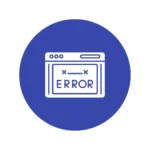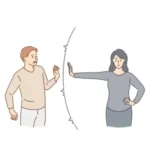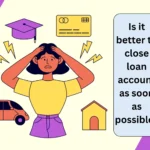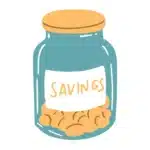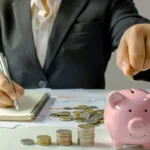
Most of us have a bank account where we keep our hard-earned money.
A bank account can be a savings account, a checking account, or an account for a specific purpose.
Whatever type of bank account you maintain in a bank. You would need cash withdrawals every now and then.
The bank lets you operate your account through different channels. At the same time, they provide you with multiple ways of withdrawing cash from the bank account.
You may use an ATM or Debit card to encash. This can be done over an ATM or a specified bank counter (SWO-Single Window Operator) where a card-swiping device is attached.
Another way of cashing out would be through internet banking with a cardless transaction.
Among the banks, you may find this possible in SBI YONO cash where you have to generate a transaction password for withdrawing money at an ATM.
You can also withdraw cash with a cheque. Cash withdrawals over the counter with a cheque are one of the safest ways to do banking.
A cheque is a negotiable instrument that allows cash withdrawal from an account in many forms. You can withdraw money for yourself, and you can also hand over a cheque to anyone as a payment with proper endorsement.
Either way, a cheque is an instrument that lets you manage your payments and withdrawals from your bank account.
And the rules and regulations of cheque functionality are governed by the NI Act, 1881 and the Payment Settlement Act.
If you are looking to see how to get your money with a cheque then you are in the right place. This article covers all the basics of cash withdrawal with a cheque to self. Let’s see how to write a self-cheque.
How to write Self Cheque?
Writing a self-cheque does not have to be difficult. All you need to do is provide a few details before giving it to the cashier, who is a bank employee.
When filling out a cheque you have to provide some specific details. These details have to be written on the cheque leaf. That includes 5 main pieces of information: the payee’s name, date, amount, and your signature.
The self-cheque withdrawal limit depends on how much you need to withdraw. Banks do not impose any limitations on the cheque withdrawal amount. Cheque payments can be made for as little as ₹1 and as much as ₹1 crore. But who would need to withdraw crores of hard cash? Ultimately, people would prefer an account payee if the amount is large.
Though, you may find a certain restriction on self-cheque payment in different locations. At the home branch (the branch where you maintain your bank account), there may not be any restrictions for cheque payment. But if you visit other branches, the bank may not give you what you need.
For example, the self-cheque withdrawal limit at the SBI home branch is as you require, but when you visit the other SBI branches, they may allow you to withdraw only up to ₹50000, and no third-party cash withdrawal is entertained at SBI non-home branches.
Only, certain types of account holders are allowed to do so. These groups of people may be account users under wealth customers, high-end business current accounts etc.
Now, let’s pick these 5 basic requirements one by one and see how to fill up a proper self-cheque in no time.
The Person You Want to Pay
The first and foremost thing about writing a cheque is the payee detail. If you are paying someone, you have to write the name of the person you are giving money to.
When you see a cheque, there is a provision for writing the payee details. If it’s a person, write his name or if it’s a company or any other organisation, write the organisation name as a payee.
On the other hand, if you want to withdraw funds yourself, you have to write the word self as a payee.
Put the Date
The Cheque drawing date is one of the most important parts when filling up a cheque. A minor mistake on this would lead to payment rejection.
So, put the date on the cheque leaf. You can specify your bank on which day you intend to get the payment done. This means you can write future-dated cheques too. In case you are payable some amount in the near future you can exercise this feature of a post-dated cheque.
Otherwise, put the date of the transaction as required and proceed to fill up other details.
The Amount You Want to Withdraw.
There will be a column for writing the withdrawal amount in word as well as in figures. Write it down legibly and make sure the amount in words and figures is precise. Try not to make extra gaps between the words and figures.
Why you should write the amount without giving extra space is that- if the cheque falls into the wrong hands, they may try to manipulate changing the amount and encash heavy amounts. This can be avoided if you follow certain instructions given by the bank under their cheque policy.
Put Your Signature.
Whenever you write a cheque you have to sign properly- it can be self cheque, yourself cheque or a cheque drawn on someone else. The signature is a must. In the bearer cheque, you won’t have to endorse on the back side of the leave as the bearer of the cheque is the owner of the cheque.
Whereas, drawing an order cheque requires endorsing on the back side of the cheque leaf. Even if it’s you who is going to withdraw money, bank may ask you to sign in front of them to verify it’s you- the owner of the account.
The Account Number.
When we see the latest cheque leaf which is as per Reserve Bank’s guidelines, we get the personalized chequebook which has a pre-printed account number with our name on it.
But, when we look into those emergency cheques which banks usually provide to their customer are not personalized ones. Such cheques are devoid of any personal details prints, unlike the personalized cheque.
So, when you have these emergency cheques, you need to fill up the account number in the box provided for the same.
Self-Cheque Withdrawal Rules
As you can see, a self-cheque is a cheque drawn in such a manner that you are going to withdraw by yourself. Self-cheque rules do not have to be complex, it’s just the process of getting money out of your bank account.
Banks advise following a few rules which can be summed up as below-
| Self cheque is meant for cash withdrawal by the account holder himself. Bank usually rejects payment if someone else visits to encash rather than the drawer. |
| However, a self-cheque may be payable to another party if it’s a bearer cheque. |
| When writing a self-cheque you have to fill it up error-free. Overwritten cheques are invalid and banks may return you unpaid. |
| You can endorse and transfer a self-cheque to another party and let them encash the money in your favour. |
| A self-cheque instrument can be cancelled anytime you like. You can put a stop payment on a particular cheque if you lost it. |
| Putting a stop payment on a cheque may cost you. Banks usually charge a fee for the same. If it’s multiple cheques, you may end up paying a large amount to the bank. |
Conclusion
A self-cheque is a cheque drawn for yourself for cash withdrawal. How it works is quite simple to understand. All you have to do is to fill up the cheque as per requirements. For example, giving details such as the payee’s name, date and withdrawal amount is the basic thing.
When you are done filling up the cheque leaf, go to the SWO and present your cheque. The counter staff may verify the authenticity of it and pay you cash accordingly.
There’s no limit on how much you can withdraw with a self-cheque. If the need arises, you may even encash a crore of rupees. One of the safest ways of personal banking and you should definitely have a clear idea about drawing a self-cheque.
